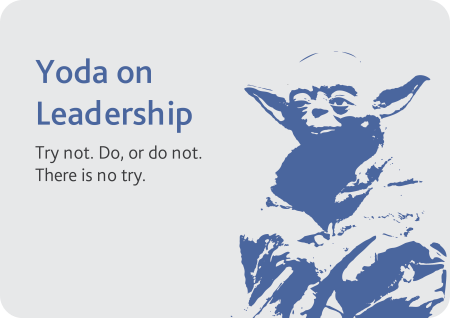How top companies are changing their approach to sales
When the influential management analyst Dan Pink conducted a poll for his latest book To Sell Is Human, he found that the most common word associated with salespeople is ‘pushy’ – no surprises there. But this cliché of sales as the domain of ruthless hustlers is as tired as it is tenacious. Fuelled by new research and innovative thinking, the UK’s best sales teams aren’t just driving the bottom line, they’re taking a lead role in generating customer advocacy and loyalty, not to mention boosting employee engagement. They’re game-changing the industry.
Unfortunately, the majority of businesses are still struggling with outdated sales mindsets, and change can be particularly scary when times are tough.
The days of ‘hooking’ the client, fielding objections, and constantly pushing to close are over. Thanks to social media, customers are unprecedentedly informed and empowered; recent research from the Sales Executive Council finds that most buyers are 60% of the way down their decision-making cycle before they even talk to a salesperson. Distrust in big business has skyrocketed, and regulatory changes are causing massive upheaval.
Stop weighing the pig
Doing more of the same – selling faster and harder, to bigger targets and shorter deadlines – will not lead to different outcomes. Instead, leaders need to help salespeople redefine who they are, what they do, and how they do it. It’s not easy, but it’s urgently important, and the results will speak for themselves.
Let’s begin by examining the ‘who’. When it comes to personal sales styles, it’s time to give pushiness the shove. A study published by Adam Grant last year in the journal Psychological Science found that ‘ambiverts’ – people who are equal parts extroverted and introverted – perform best. Dan Pink’s essential ABC of sales traits are Atunement (an ability to connect and understand needs), Buoyancy (an ability to bounce back) and Clarity (being clear what you’re offering). The Challenger Sale, a new book by the Corporate Executive Board, outlines five typical sales personalities – the Lone Wolf, the Problem Solver, the Hard Worker, the Relationship Builder and the Challenger. Experiments reveal that it is the Challenger, the commercially savvy, far-sighted and well-researched self-starter, who really moves the dial.
So emotional intelligence, sensitivity to context and a sophisticated perspective are the personal qualities that win out, but the way in which organisations frame the function of sales itself is equally important.
Earlier this year, Bryan Kramer, CEO of PureMatter, popularised the concept of H2H (Human-to-Human) sales and marketing, in which he advocated discarding the concepts of B2B, B2C and D2C in favour of a connection between equals: “Human beings are innately complex yet strive for simplicity. Our challenge as humans is to find, understand and explain the complex in its most simplistic form […] Find the commonality in our humanity, and speak the language we’ve all been waiting for.”
This includes understanding that salespeople are not just there to sign off order forms. Research from the Corporate Executive Board finds that a good sales experience accounts for 53% of what drives long-term loyalty, so although price will always be important, focusing on value at the expense of service can be a false economy.
Of course, these new mindsets will only take hold if they’re embedded in a whole ecosystem of suitable management, process and reward. Encouraging advisors to provide authentic experiences rather than setting restrictive sales targets, coaching Challenger skills, and tweaking recruitment criteria are all part of the mix.
In his previous book Drive: The Surprising Truth About What Motivates Us, Pink suggested that 80% of the workforce is motivated by a sense of purpose, autonomy and mastery more than they are financial gain, so leaders also need to balance a fair and transparent pay structure with the sort of flexible, empowering culture seen in young hero companies such as Innocent and Netflix. Sometimes this involves getting rid of people who cannot or will not adapt. Netflix is as ruthless with ‘dead wood’ as it is supportive of bright stars, so if you followed this approach, your own Lone Wolves will gradually have to be rooted out.
It’s challenging stuff, particularly for large, established companies operating in sectors such as energy, finance and telecoms. Thankfully, there are leaders out there proving that it absolutely can be done.
A leading energy company has 15,000 people in their energy sales channel, 4,000 in their homecare channel, and 500 in field sales. A few years ago, they hired a brilliant new sales director who believed that current perception of the energy sector begged a whole new channel approach, and called on Blue Sky to help. Starting with the 1,200 people in their outbound channel, we helped them remove the frontline sales-per-hour target, instead encouraging salespeople to focus on having a great conversation with the customer, building the brand and being genuinely helpful. If customers didn’t wish to make a sale at that time, they were given a number to call back on later if they changed their mind, rather than being pushed to confirm a sale straight away.
The results? Sales per hour stayed largely the same, and from an engagement perspective, the workforce was far more motivated. Plus, thanks to the ‘call back’ mechanic, they saw a significant increase in the volume of inbound calls – which had double the conversion of the conversations on the outbound line.
“Selling, I’ve grown to understand,” says Dan Pink, “is more urgent, more important, and, in its own sweet way, more beautiful than we realise.” Sales leaders need to stop selling themselves short. H2H makes for better results – but it’s also a sales approach of which we can all be proud.















